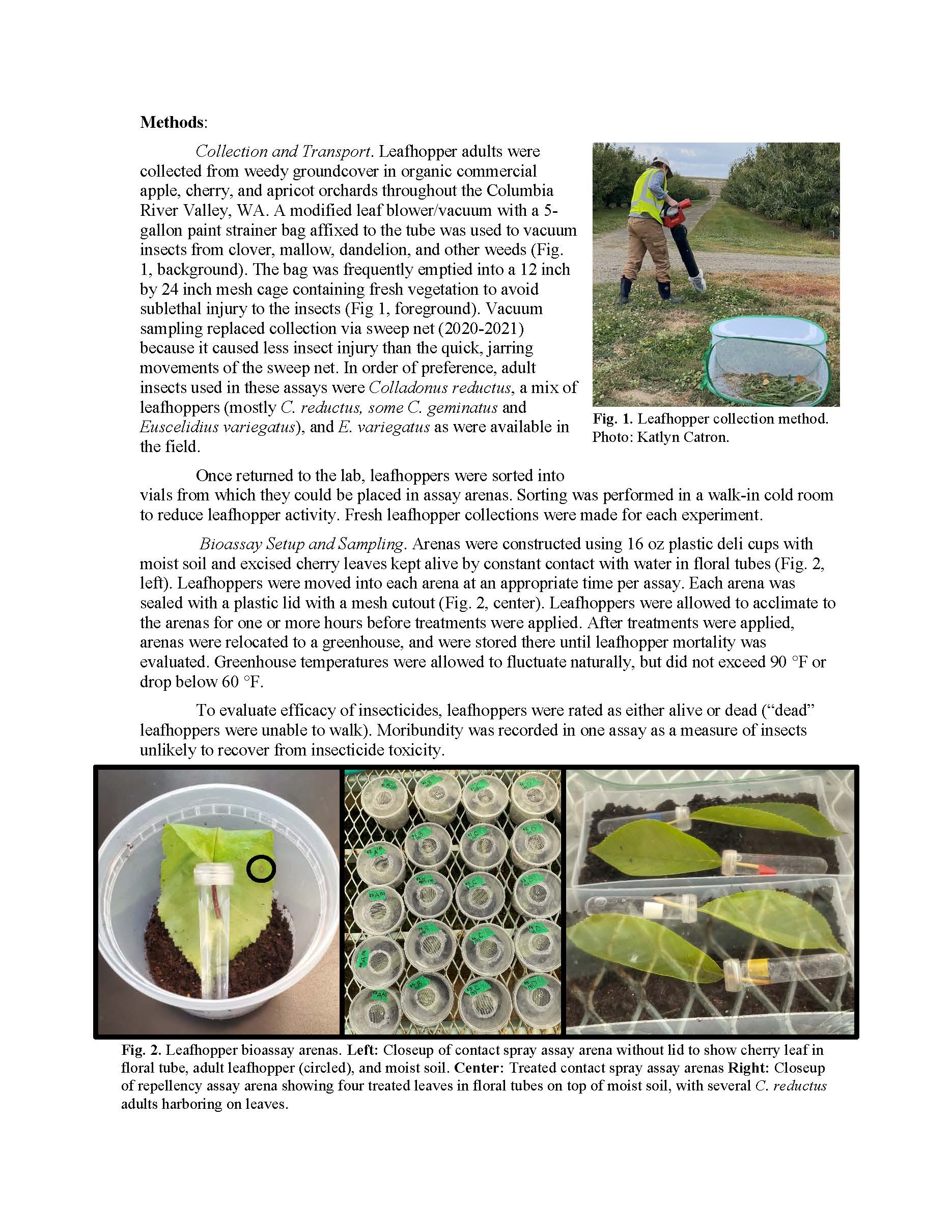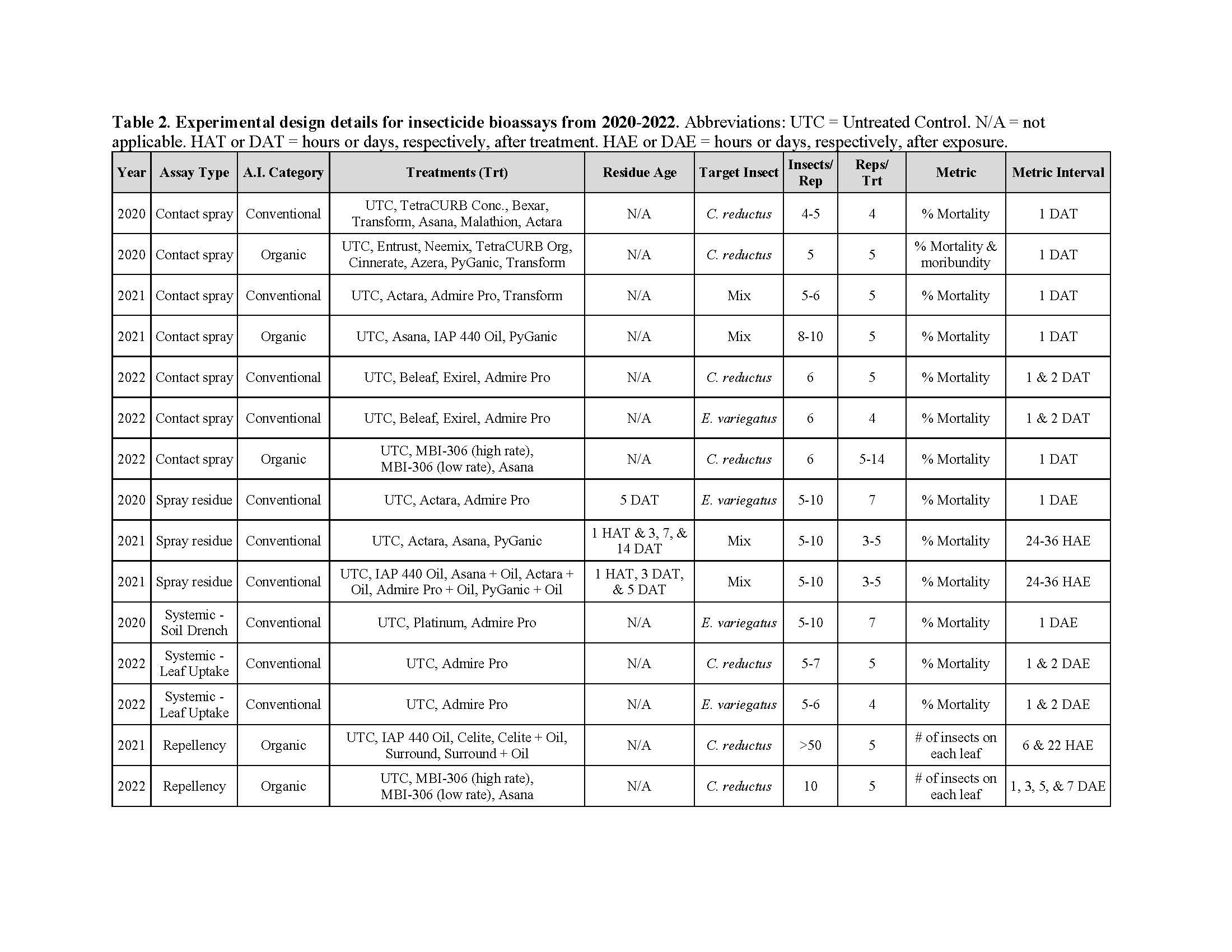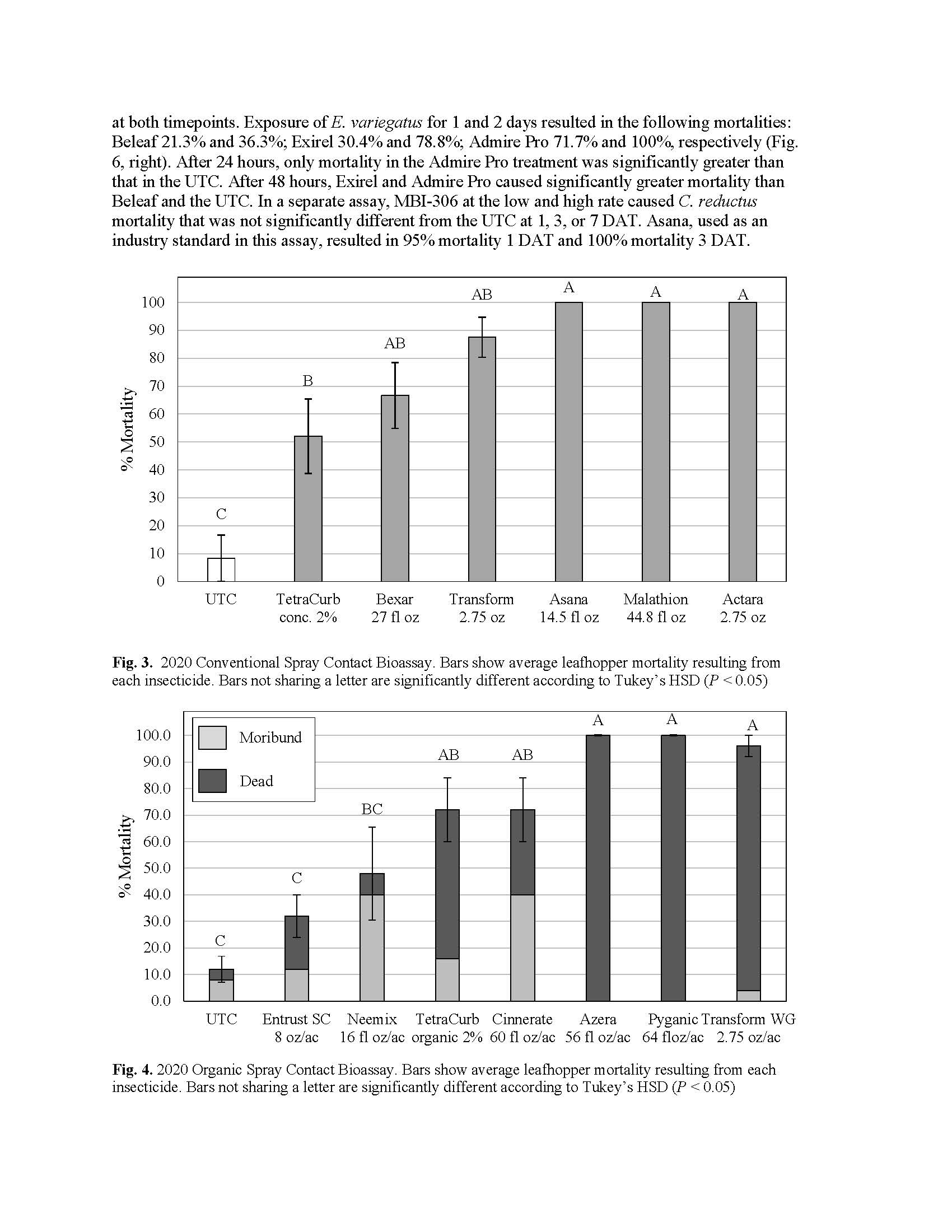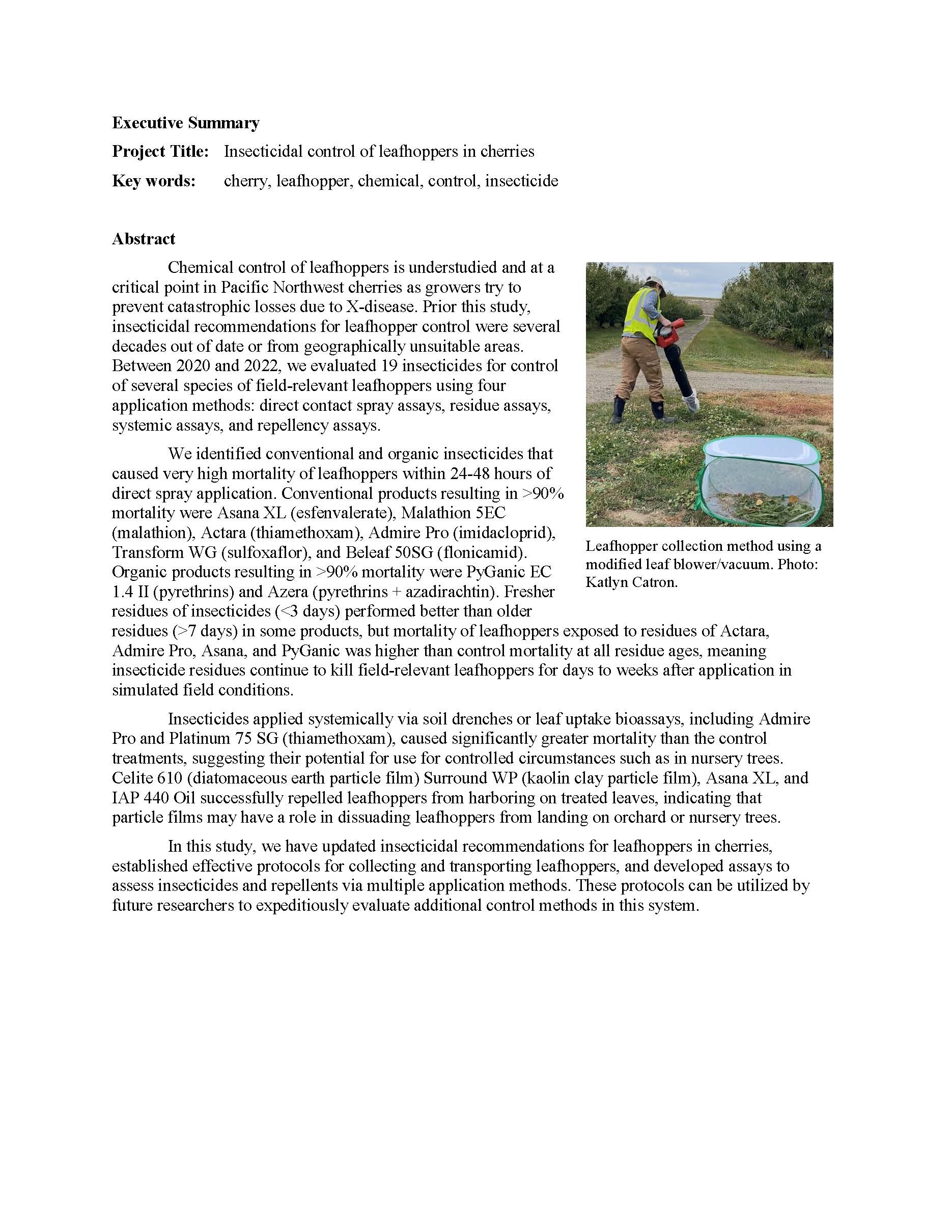Insecticidal control of leafhoppers in cherries
Author: Dr. Louis Nottingham
Published: 2022
Summary: Chemical control of leafhoppers is understudied and at a critical point in Pacific Northwest cherries as growers try to prevent catastrophic losses due to X-disease. Prior this study, insecticidal recommendations for leafhopper control were several decades out of date or from geographically unsuitable areas. Between 2020 and 2022, we evaluated 19 insecticides for control of several species of field-relevant leafhoppers using four application methods: direct contact spray assays, residue assays, systemic assays, and repellency assays. We identified conventional and organic insecticides that caused very high mortality of leafhoppers within 24-48 hours of direct spray application. Conventional products resulting in >90% mortality were Asana XL (esfenvalerate), Malathion 5EC (malathion), Actara (thiamethoxam), Admire Pro (imidacloprid), Transform WG (sulfoxaflor), and Beleaf 50SG (flonicamid). Organic products resulting in >90% mortality were PyGanic EC 1.4 II (pyrethrins) and Azera (pyrethrins + azadirachtin). Fresher residues of insecticides (<3 days) performed better than older residues (>7 days) in some products, but mortality of leafhoppers exposed to residues of Actara, Admire Pro, Asana, and PyGanic was higher than control mortality at all residue ages, meaning insecticide residues continue to kill field-relevant leafhoppers for days to weeks after application in simulated field conditions. Insecticides applied systemically via soil drenches or leaf uptake bioassays, including Admire Pro and Platinum 75 SG (thiamethoxam), caused significantly greater mortality than the control treatments, suggesting their potential for use for controlled circumstances such as in nursery trees. Celite 610 (diatomaceous earth particle film) Surround WP (kaolin clay particle film), Asana XL, and IAP 440 Oil successfully repelled leafhoppers from harboring on treated leaves, indicating that particle films may have a role in dissuading leafhoppers from landing on orchard or nursery trees. In this study, we have updated insecticidal recommendations for leafhoppers in cherries, established effective protocols for collecting and transporting leafhoppers, and developed assays to assess insecticides and repellents via multiple application methods. These protocols can be utilized by future researchers to expeditiously evaluate additional control methods in this system.
Keywords:













